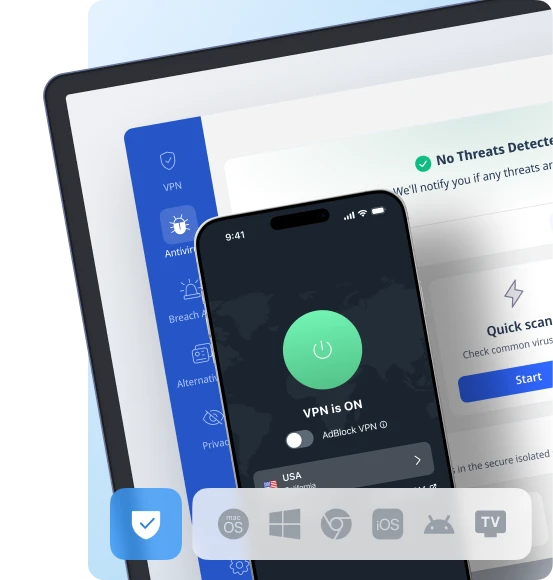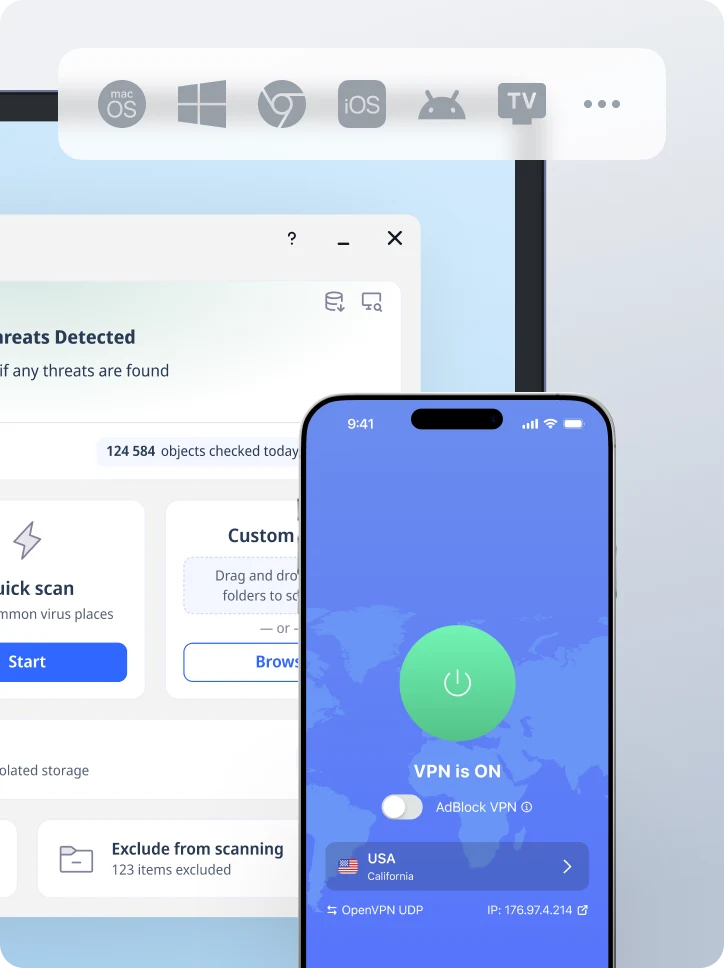Is Your Smart Device Part of a Botnet?
From smart TVs and refrigerators to security cameras and voice assistants, smart devices make life more convenient than ever. But that convenience comes at a cost your Internet of Things (IoT) devices could be part of a global cyber army and you don’t even know it. These cyber armies are called IoT botnets and they’re behind some of the most disruptive online attacks today.
IoT botnets are formed by malicious actors who compromise internet connected devices and turn them into infected devices that can be controlled remotely for cyber attacks.
Before you dismiss this as a tech-world issue, here’s the kicker: any poorly secured smart device in your home or office can be recruited by a botnet to participate in large scale attacks, steal your data or spy on you. In this guide we’ll explore what IoT botnets are, how they work, the risks they pose and most importantly how you can protect yourself including with VeePN.

Protect your smart home with VeePN
To keep your digital life secure and private and to secure IoT devices against cyber threats consider these top benefits of using VeePN:
- Encrypt your devices with encrypted traffic: VeePN encrypts all data sent and received by your smart devices so it’s almost impossible for attackers to intercept or hijack them.
- Block malicious IP addresses and scripts: VeePN’s built-in protection prevents you from connecting to known botnet command-and-control servers.
- Bypass ISP-level vulnerabilities: Prevent your ISP from tracking your traffic and reduce the risk of mass data collection by hiding your online activities.
- Protect multiple devices at once: One VeePN subscription protects up to 10 devices so all your smart tech is secure.
- Enjoy stable performance with 2,500+ servers worldwide: Get fast and uninterrupted connections for work and play without compromising on safety.
What is an IoT botnet?
A botnet on the IoT is an online network of manipulated smart devices, controlled by cybercriminals remotely. These are the devices that get infected with the bot malware or any other malicious malware that is meant to take control of the device remotely and therefore turn into the so-called bots that spam, steal data or do denial-of-service (DDoS) attacks without the knowledge of the owners.
Notorious cases include the Mirai botnet that brought down some of the leading online services such as twitter and Netflix in 2016 and more recent ones like Mozi and Torii which are evolving and promise even more capabilities.
How do IoT botnets and botnet malware work?
Here’s a simplified breakdown of how a typical IoT botnet operation works:
- Scanning: The botnet malware scans the Internet for vulnerable IoT devices by probing their IP address.
- Exploitation: It exploits default passwords, outdated firmware, unpatched software or remote code execution vulnerabilities to compromise devices.
- Infection: The malware installs itself on the device often silently turning it into one of the compromised devices.
- Communication: The compromised devices connect to a command-and-control server operated by the attacker often exchanging data to receive instructions or report status.
- Execution: The infected device carries out attacks or forwards stolen data as commanded.
This happens without alerting the user and compromised devices can be difficult to detect unless you monitor your network closely.
IoT botnet trends: How big is the threat today?
The IoT botnet threat has never been so large. There are billions of IoT devices connected to the world today the opportunities of botnet attacks have multiplied. Cybercriminals never cease to develop their strategies, and the botnet attacks become more advanced and difficult to prevent. With the help of IoT botnets, distributed denial of service (DDoS) attacks may flood the websites, render the online services inaccessible and even attack the key infrastructure endangering sensitive data and vital services.
The notorious Mirai botnet that hit the headlines in 2016 in launching some of the largest denial of service DDoS attacks in history was only the start. Ever since, new forms of botnets have appeared, one more sophisticated than the other and capable of infecting a more expansive number of IoT devices. Such botnets have the ability to recruit thousands or even millions of vulnerable devices within a short period of time converting them into an effective tool to launch massive botnet attacks.
The risk increases together with the number of connected devices. The current IoT botnets are a major threat not only to a person but also to corporations and governments. To remain ahead of such threats, vigilance and proactive security techniques should always be implemented to make sure that your devices would not fall victim to the next massive attack.
Risks of IoT botnets and DDoS attacks
IoT botnets are more than just a nuisance they can cause real harm:* DDoS attacks: Flooding websites and services with attack traffic to crash them. Examples include ddos attack, botnet ddos attacks and IoT botnet DDoS attacks which are large scale malicious activities orchestrated by compromised devices.
- Data breaches: Extracting private information from devices or networks.
- Spying and snooping: Using microphones, cameras or sensors to monitor users.
- Network breach: Using one infected device as a gateway to access other devices in your network.
These malicious activities can cause network disruptions and pose significant risks to individuals and organizations.
Real-world examples of IoT botnet damage
- Dyn DNS attack (2016): The Mirai botnet took down major websites like Twitter and Netflix by targeting Dyn, a major DNS provider affecting services like Spotify, Reddit and PayPal. The attack used a large number of infected IoT devices including ip cameras, routers and smart TVs.
- VPNFilter: Targeted routers and NAS devices to perform espionage and destructive attacks often resulting in network services disruption.
- Mozi botnet: Continues to grow rapidly using peer-to-peer architecture and advanced encryption. Mozi also uses malicious domains for command and control communications.
These attacks show the wide reach of IoT botnets to critical infrastructure and online services.
How do IoT botnets get detected? The role of AI and smart detection systems
Detecting IoT botnets is a tough challenge but AI and machine learning are making it possible to catch these threats before they cause harm. Modern iot botnet detection systems use AI-powered algorithms to analyze network traffic and identify unusual patterns that may indicate botnet activity.
Unlike traditional methods which rely on known signatures these smart detection systems can detect new and emerging threats by learning what normal traffic looks like and flagging anything out of the ordinary.Intrusion detection systems (IDS) and anomaly detection systems (ADS) are leading the charge.
They continuously monitor your network using a combination of behavioral analysis, statistical techniques and machine learning to detect even the slightest signs of a botnet infection. By using AI these detection systems can process huge amounts of data in real time so you can respond quickly to potential threats.With the rapid growth of IoT botnets investing in advanced iot botnet detection technologies is key to staying safe. The smarter your detection system the better your chances of stopping a botnet attack before it takes hold.
Network security: Protecting more than just your devices
Protecting your IoT environment is more than just protecting individual devices – it’s about protecting your entire network from botnet attacks and other cyber threats. A solid network security strategy includes multiple layers of defense such as firewalls to block unauthorized access, intrusion detection and prevention systems to detect and stop suspicious activity and virtual private networks (VPNs) to encrypt your data and keep your communications private.
Using secure communication protocols like TLS and SSL ensures data exchanged between your devices and the internet remains confidential and tamper-proof. Network segmentation is another powerful tool: by dividing your network into isolated segments you can contain the spread of malware and limit the damage if a device does become compromised.
Taking a holistic approach to network security can reduce the risk of IoT botnet attacks and protect your connected world from a wide range of cyber threats.
IoT security standards and regulations: What you need to know
The increasing number of IoT devices increases the necessity of proper security standards and regulations that would allow users to be safe and secure and their data to remain safe and secure as well. Such professional bodies as the Internet Engineering Task Force (IETF) and the National Institute of Standards and Technology (NIST) have come up with guidelines on secure coding, gadget control and communication standards in the IoT sector. The standards assist manufacturers and users to have security in the mind when building and maintaining devices.
Besides technical standards regulations like the General Data Protection Regulation (GDPR) and the California Consumer Privacy Act (CCPA that mandate organizations to use strong security measures to protect consumer data, the regulations also put forward the need to have a strong security mechanism in place. Adherence to such rules does not only contribute to mitigation of cyber risks but also allows gaining user trust by showing commitment in matters of privacy and security.
Keep abreast of new IoT security guidelines and policies in case you operate or own connected devices. You can build a safer, more secure IoT environment by adopting best practice and satisfying regulatory requirements.
What to do if your device is compromised
Incident response for smart homesIf you think an IoT device in your smart home has been compromised act fast to minimize the impact and stop further cyber threats. Start by identifying the affected device and disconnect it from your network to stop the spread of malware. Next perform a full malware removal – this may involve resetting the device to factory settings or using specialized security tools.
After removal change all default passwords and replace them with strong unique credentials. Update the device’s firmware and software to patch any known vulnerabilities. Strengthen your overall security by enabling firewalls, setting up an intrusion detection system and monitoring your network for unusual activity.Having an incident response plan in place means you can respond to any security incident and keep your smart home and all your connected devices safe from future attacks.
How to protect your IoT devices from IoT botnets
Follow these simple tips to reduce the risk of your smart devices being part of a botnet:
- Change default usernames and passwords: Use strong unique credentials and avoid weak or default passwords which are commonly exploited by cyber criminals and threat actors to compromise device security.
- Update firmware regularly: Patch known vulnerabilities as soon as updates are available.
- Segment your network: Keep IoT devices on a separate Wi-Fi network from sensitive devices like laptops or phones to protect your iot system and iot networks.
- Disable unnecessary features: Turn off remote access or services you don’t use.
- Use a VPN like VeePN: Encrypt traffic and shield devices from external interference.
In addition to these tips maintaining robust device security is key to protecting iot systems, iot environments and iot networks from botnet activities and malicious traffic. Employing advanced detection methods such as machine learning algorithms – including logistic regression and convolutional neural networks (CNNs) – and other machine learning techniques can help detect botnets and identify abnormal behaviors.
Using collected data to train machine learning models and evaluating them with performance metrics like accuracy and recall are key steps in improving IoT botnet detection techniques. Integrating threat intelligence, leveraging cloud computing for scalable analysis and understanding the tactics of threat actors and cyber criminals further enhance your ability to secure iot devices and prevent attacks.
Final thoughts
Stay smart about your smart devicesAs IoT becomes more and more part of our daily lives so do the risks that come with it. IoT botnet infections have infected the internet at large and users worldwide and not just your smart home but the entire internet infrastructure.Stay smart: use VeePN.
VeePN is freedom
Download VeePN Client for All Platforms
Enjoy a smooth VPN experience anywhere, anytime. No matter the device you have — phone or laptop, tablet or router — VeePN’s next-gen data protection and ultra-fast speeds will cover all of them.
Download for PC Download for Mac IOS and Android App
IOS and Android App
Want secure browsing while reading this?
See the difference for yourself - Try VeePN PRO for 3-days for $1, no risk, no pressure.
Start My $1 TrialThen VeePN PRO 1-year plan






